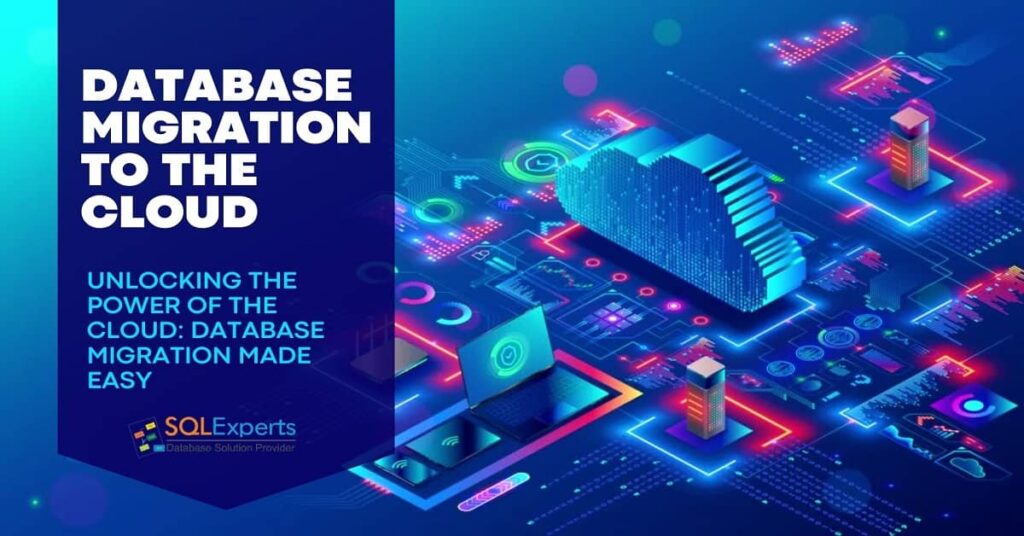Today’s organizations are leaning toward a hybrid cloud model that allows them to enjoy the advantages of both public and private clouds.
They are in a position to improve their IT infrastructure, for instance, by using the public cloud for bandwidth and cost benefits while still keeping some information within the private cloud.
Nevertheless, benefits in the case of hybrid cloud usage also come with additional problems or issues, especially concerning security.
This is primarily because the difficulty in managing security is not limited to the private cloud but extends to the public cloud; hence, hybrid cloud security has become crucial for companies wishing to protect their information, applications, and networks.
Protecting data and apps within the hybrid cloud Computing or hybrid cloud architecture, which consists of both off-the-shelf and hosted infrastructure services, is referred to as hybrid cloud security.
This unique structure requires a security strategy that is by far more inclusive than members found in a single cloud, which can be traditional cloud computing environments.
The flexibility and elasticity of hybrid cloud extend to business operations; hence, it suits well the fast-changing business needs, but at the same time, these benefits come with increased risks.
Risks such as data breach, data loss, misconfigurations, and compliance infringing, among others, must be managed by stringent security frameworks to ensure operations are not disrupted.
In this blog post, we’ll explore the key components of hybrid cloud security.
We’ll also discuss strategies to safeguard your organization’s sensitive information.
Let’s dive into why hybrid cloud security is crucial in today’s digital landscape.
What Is A Hybrid Cloud Security?
A hybrid cloud refers to a computing environment that incorporates both public and private clouds with the capability of sharing data and applications between the two.
This setup provides organizations with an element of flexibility since it combines the safety of private clouds with the extensive use of public clouds.
It makes it possible for workloads to transition between the two environments when necessary in order to optimize performance, cost, and security.
In addition, it combines tools and practices that safeguard sensitive information, ensuring that everything remains secure regardless of where it’s stored or accessed.
This security approach helps organizations manage risks, maintain compliance, and protect against threats like data breaches or unauthorized access.
By using hybrid cloud security, businesses can take advantage of the benefits of cloud computing while keeping their critical assets safe.
How Does Hybrid Cloud Security Works In Cloud Computing?
- Data Encryption: Hybrid cloud security employs strong encryption methods. This protects data both at rest and in transit, ensuring that unauthorized users cannot access sensitive information.
- Access Control: Organizations implement strict access control measures. This limits who can access data and resources in the hybrid cloud environment, reducing the risk of breaches.
- Continuous Monitoring: Security tools continuously monitor the hybrid cloud infrastructure. This helps detect and respond to threats in real-time, enhancing overall security posture.
- Compliance Management: Hybrid cloud security solutions often include compliance features. These ensure that organizations meet regulatory requirements, protecting them from legal issues.
Each of these components plays a crucial role in maintaining the security of hybrid cloud environments.
Why Hybrid Cloud Security Is Important?
Hybrid cloud security is crucial because businesses often use both local and cloud systems, making data more vulnerable to threats.
Protecting sensitive information is essential to avoid data breaches that can hurt a company’s reputation and finances.
With different environments, it’s vital to have consistent security measures in place to monitor and respond to potential risks.
This approach ensures that both on-premises and cloud data stay safe from cyber attacks, helping companies maintain trust with their customers and comply with regulations.
Hybrid Cloud Security Benefits
In today’s digital world, businesses are turning to hybrid cloud solutions for their flexibility and power.
However, many people overlook a crucial aspect: hybrid cloud security benefits.
This approach not only enhances data protection but also allows companies to meet unique compliance requirements.
There are a variety of advantages that hybrid cloud security provides to organizations, such as:
- Enhanced Data Protection: The more sensitive information can be kept in the private cloud, whereas other less sensitive information should generally reside in the public cloud, thus promoting both high security and low costs.
- Compliance Management: They may place the compliance-sensitive data on the private cloud to maintain control over this type of data while still utilizing the public cloud for less regulated workloads.
- Scalability with Security: Hybrid cloud designs enable organizations to leverage the public cloud’s capacity for scaling their operations without compromising security due to the existence of a private cloud.
- Cost Efficiency: Utilizing public clouds for less sensitive data as well as workloads, organizations can keep costs under control without compromising security and compliance.
In short, hybrid cloud security offers businesses a smart way to protect their data while enjoying flexibility and cost savings.
By combining the best features of both public and private clouds, organizations can ensure better compliance, stronger security, and improved disaster recovery.
As more companies move to hybrid cloud solutions, investing in robust security measures is essential for safeguarding valuable information.
Consider integrating hybrid cloud security into your strategy to enhance your organization’s overall safety and efficiency.
Hybrid Cloud Security Challenges
As businesses adopt hybrid cloud environments, security becomes a top concern.
Balancing on-premises and cloud resources requires careful planning. Data breaches, compliance issues, and misconfigurations can jeopardize sensitive information.
Detracting from the advantages that come with hybrid cloud environments, these security challenges provide hurdles that have to be surmounted.
-
Data Breaches and Leaks
When information transitions from one step into another, particularly from private clouds to public ones, the likelihood of data breaches and data leaks goes up.
Hybrid cloud security is essential in enabling nondisclosure of sensitive information during movement and even while still and stored.
-
Misconfiguration of Cloud Services
In hybrid cloud environments, one of the prevalent security threats is improper or inordinate cloud service deployments.
Misconfigurations such as these may lead to breaches because data may be exposed to users without authorization.
-
Identity and Access Management (IAM) Issues
Overseeing the identity and access rights management across public and private clouds can be intricate, which creates opportunities for IAM attacks.
Inadequately designed access controls may lead to compromise upon sensitive information.
-
Compliance and Regulatory Concerns
Hybrid cloud systems have to comply with a lot of rules and regulations, especially in industries that are closely regulated, such as health care and finance.
The greatest burden that may arise is regulatory compliance for both the cloud platforms.
Hybrid cloud security comes with unique challenges that businesses must face to protect their sensitive data.
By adopting strong security measures and staying informed on the latest threats, organizations can overcome these obstacles.
Hybrid Cloud Security Best Practices
In order to adequately safeguard hybrid cloud environments, organizations must implement best practices that counter the specific challenges that are frequently encountered.
-
Implementing robust encryption
Encryption must be a foundational element of the security architecture of hybrid clouds.
This is aimed at ensuring protection for data while in transit as well as stored data.
In addition, strong encryption protocols guarantee that unauthorized users will not gain access to sensitive information.
-
Regular Security Assessments and Audits
Carrying out recurring security evaluations and inspections contributes toward recognizing weaknesses as well as configuration errors within the hybrid cloud infrastructure.
These audits can discover areas of improvement that must be worked on to mitigate the likelihood of breaches occurring.
-
Utilizing Multi-Factor Authentication (MFA)
Multi-factor authentication enhances security by requiring users not only to enter a password but also to validate their identity using other means.
This is quite useful in hybrid environments where access points can span across various systems.
-
Data Loss Prevention (DLP) Strategies
The main objective of DLP strategies is inhibiting data loss, theft, or leakage.
It also promotes the implementation of strict DLP measures in order to safeguard sensitive information and to act upon any unusual behavior that is noticeable.
Hybrid cloud security is essential for protecting your data and applications. By implementing strong access controls, regular monitoring,
and effective encryption, you can safeguard your cloud environment. Staying informed about threats and updating your security practices is crucial.
Remember, a strong security strategy not only protects your business but also builds trust with your customers.
Hybrid Cloud Security Tools and Technologies
As businesses increasingly adopt hybrid cloud solutions, the importance of robust hybrid cloud security tools and technologies becomes clear.
These tools protect sensitive data and ensure compliance with regulations, addressing vulnerabilities that come with using multiple cloud environments.
-
Security Information and Event Management (SIEM) Solutions
By keeping an eye on the network traffic patterns, SIEM solutions also offer security alert synthesis analysis, making organizations aware of possible threats and helping in responding to them in time.
-
Cloud Access Security Brokers (CASBs)
Cloud Access Security Brokers work as these intermediaries, linking consumers and cloud service providers.
They give visibility into and control over the use of the cloud and also help in the application of security policies.
-
Network Security Solutions
Hybrid cloud environments are prone to external risks, which makes network security solutions like firewalls and VPNs core elements of their protection.
Such solutions protect the transport of data between the public and private cloud.
-
Intrusion Detection and Prevention Systems (IDPS)
IDPS systems are capable of analyzing the network traffic and detecting any suspicious activities in order to protect the security of the system. … Such systems are vital for real-time threat detection and mitigation.
Hybrid cloud security tools and technologies play a vital role in keeping your data safe across multiple environments.
By understanding key aspects like data encryption, identity management, and continuous monitoring, organizations can better protect their assets.
Investing in these tools not only enhances security but also builds trust with customers.
Building a Security Framework for Hybrid Cloud
Hybrid cloud setups merge public cloud flexibility with private cloud control, posing security challenges.
Establishing a strong security framework is crucial for safeguarding data in this environment.
In order to properly protect hybrid cloud settings, organizations need to put in place an all-encompassing configuration paradigm.
-
Establishing a Security Policy
An effective security policy drafts the guidelines and most effective methods for protecting not just the public cloud but also the private cloud, whose server is under the firm’s control.
This policy must include protection of the infrastructure, including but not limited to encryption, access control, data security, and compliance issues.
-
Incident Response Planning
The necessity of having an incident response plan is critical to addressing any security breach in a prompt and efficient manner.
Such a plan should expressly define the motion to be undertaken in case of a breach, whereby a breach is first detected, then controlled, and finally damages minimized.
-
Continuous monitoring and threat detection
By employing effective continuous monitoring, organizations are capable of identifying threats and vulnerabilities in real time, which allows for the timely resolution of possible issues prior to any security occurrence.
In summary, building a security framework for hybrid cloud environments is crucial for protecting data and ensuring compliance.
By integrating best practices like risk assessment, continuous monitoring, and strong access controls, organizations can create a robust security posture.
As technology continues to evolve, maintaining this framework will help safeguard against emerging threats.
Hybrid Cloud Security Case Studies
As businesses move to hybrid cloud environments, security becomes a top concern.
Let’s explore real-world hybrid cloud security case studies that highlight the challenges and solutions organizations face.
By examining these examples, you will learn how companies successfully protect their data while enjoying the benefits of a hybrid cloud.
-
Examples of Hybrid Cloud Security Breaches
In the year 2019, a prominent financial service company, Capital One, experienced a significant hack in which its database of over 100 million customers was exposed.
The data breach was attributed to a faulty configuration of a firewall that made it possible for the assailant to infiltrate highly confidential data that was kept in the combination of on-premise infrastructure and public cloud service.
-
Lessons Learned from Successful Security Implementations
Centering security on techniques such as encryption, multi-factor authentication, and continuous monitoring has allowed firms like Netflix to embrace the hybrid cloud platform without major security incidents despite the existing large and complex cloud environment.
Hybrid cloud security case studies highlight the importance of strong security measures for businesses today.
These real-life examples show how companies can protect their data while enjoying the benefits of both public and private clouds.
Future Trends in Hybrid Cloud Security
As time passes, the security of hybrid clouds keeps on changing, with more trends expected to come up to influence how organizations secure their information in the future.
-
Evolution of Security Technologies
In addition to this, as innovations in security technologies are on the rise, better protection for hybrid cloud-based systems is being experienced.
Such aspects as better encryption protocols and systems to detect threats are likely to enhance security for the hybrid cloud in the years to come.
-
Impact of AI and Machine Learning
As the hybrid cloud revolution continues, the impact of artificial intelligence and machine learning on the security of these infrastructures is becoming more and more significant.
A system is now capable of recognizing a threat and doing so in a considerably shorter amount of time and with a higher degree of certainty than before.
-
The Role of Zero-Trust Architecture
An architecture of zero-trust, which considers every user or system as untrustworthy from the outset, is increasingly being embraced as the go-to strategy for securing hybrid cloud environments.
This model decreases the chances of breach or unauthorized access by enhancing the risk factors through the introduction of continuous authentication and verification.
As we look to the future of hybrid cloud security, it is clear that embracing automation, zero trust principles, and compliance will be essential.
Organizations must stay ahead of emerging threats while balancing flexibility and security.
By understanding these trends, businesses can protect their data and enhance their overall security posture.
Conclusion
This importance of hybrid cloud reuse in the current ever-changing IT environments is for the provision of the needed flexibility to expand operations without putting security on sensitive information at risk, which is all possible by employing hybrid cloud security.
However, the challenge of managing a public and a private cloud at the same time can be very intricate, leading to problems such as data breaches, misconfigurations, and compliance.
In this regard, organizations need to take a more active stance and deploy stronger encryption, multifactor protection, audits, and monitoring.
AI, machine learning, and especially zero trust architecture are expected to play an important role to ensure hybrid cloud security in the near future.
As the threats change, businesses will also need to be proactive, using the most updated measures and weapons available to them to secure their surroundings.
This way, the organizations would be able to enjoy all the advantages of cloud computing, even hybrid cloud computing, without the risk of insecurity, providing security and growth for the organization in the ever-evolving digital world.



